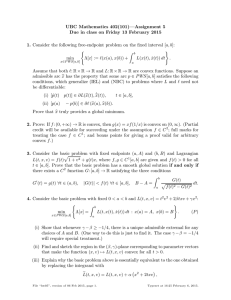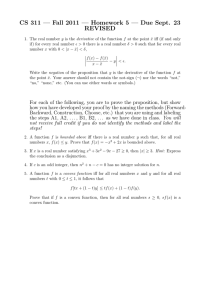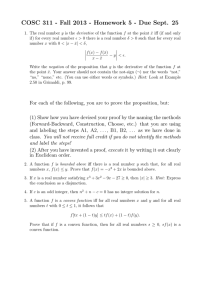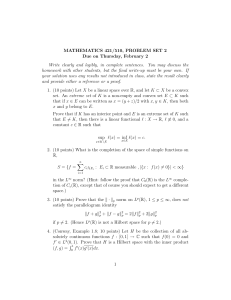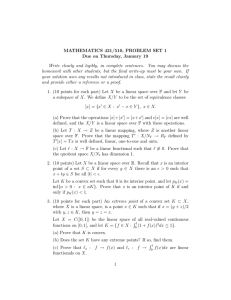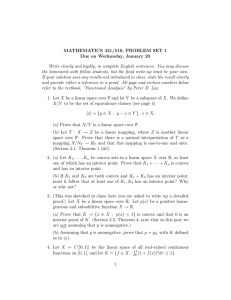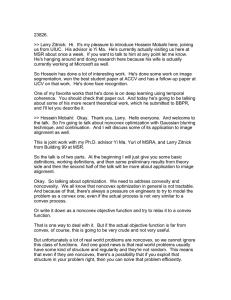CSC 576 - 2015 Fall: Homework 5 & Homework 6 Requirements
advertisement
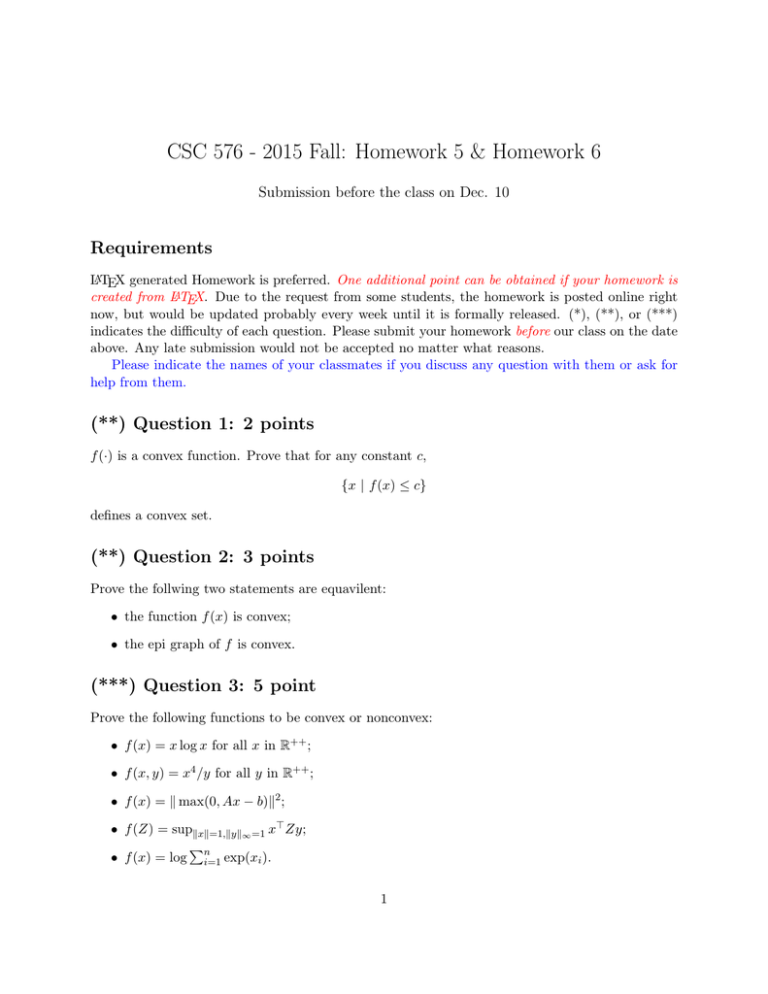
CSC 576 - 2015 Fall: Homework 5 & Homework 6
Submission before the class on Dec. 10
Requirements
LATEX generated Homework is preferred. One additional point can be obtained if your homework is
created from LATEX. Due to the request from some students, the homework is posted online right
now, but would be updated probably every week until it is formally released. (*), (**), or (***)
indicates the difficulty of each question. Please submit your homework before our class on the date
above. Any late submission would not be accepted no matter what reasons.
Please indicate the names of your classmates if you discuss any question with them or ask for
help from them.
(**) Question 1: 2 points
f (·) is a convex function. Prove that for any constant c,
{x | f (x) ≤ c}
defines a convex set.
(**) Question 2: 3 points
Prove the follwing two statements are equavilent:
• the function f (x) is convex;
• the epi graph of f is convex.
(***) Question 3: 5 point
Prove the following functions to be convex or nonconvex:
• f (x) = x log x for all x in R++ ;
• f (x, y) = x4 /y for all y in R++ ;
• f (x) = k max(0, Ax − b)k2 ;
• f (Z) = supkxk=1,kyk∞ =1 x> Zy;
P
• f (x) = log ni=1 exp(xi ).
1
(***) Question 4: 4 points
Given a function f (x, y) which is jointly convex in terms of x and y. Prove the following function
is convex as well
g(x) := min f (x, y).
y
(**) Question 5: 16 points
This is a programing homework. Consider the LASSO formulation we discussed in our class for
many times:
1
(LASSO) min f (x) := kAx − bk2 + λkxk1 ,
x
2
where λ > 0 is a predefined parameter, A ∈ Rn×p is the data matrix, and b ∈ Rn is the observation
vector.
Follow the procedure blow to generate the data:
• Generate a sparse vector x∗ with 20 nonzero elements (the value of nonzero elements can be
generated from Gaussian Distribution N (0, 10));
• Generate A ∈ Rn×p : all elements of A follow i.i.d. Gaussian distribution N (0, 1);
• Generate b ∈ Rn : b = Ax∗ + where all elements i ’s follow i.i.d. Gaussian distribution
N (0, 1);
√
• Set λ = 2n log p.
Please implement the following four algorithms to solve this problem:
• (Proximal) Gradient Descent (you can use line search to decide the step length or constant
step length γ = 1/kAT Ak);
• Accelerated (Proximal) Gradient Descent (you can use line search to decide the step length
or constant step length γ = 1/kAT Ak);
• Coordinate Descent (exactly optimize each coordinate);
• ADMM.
Set the initial point as x0 = 0 in all four algorithms and plot their objective function values at each
iteration. Note that one iteration is defined as updating all coordinates in x once, which means
that the complexity of four algorithms per iteration are comparable. Compare and comment the
efficiency for four algorithms.
Submit your runnable code to blackboard and make sure that your result is reproducable.
2
